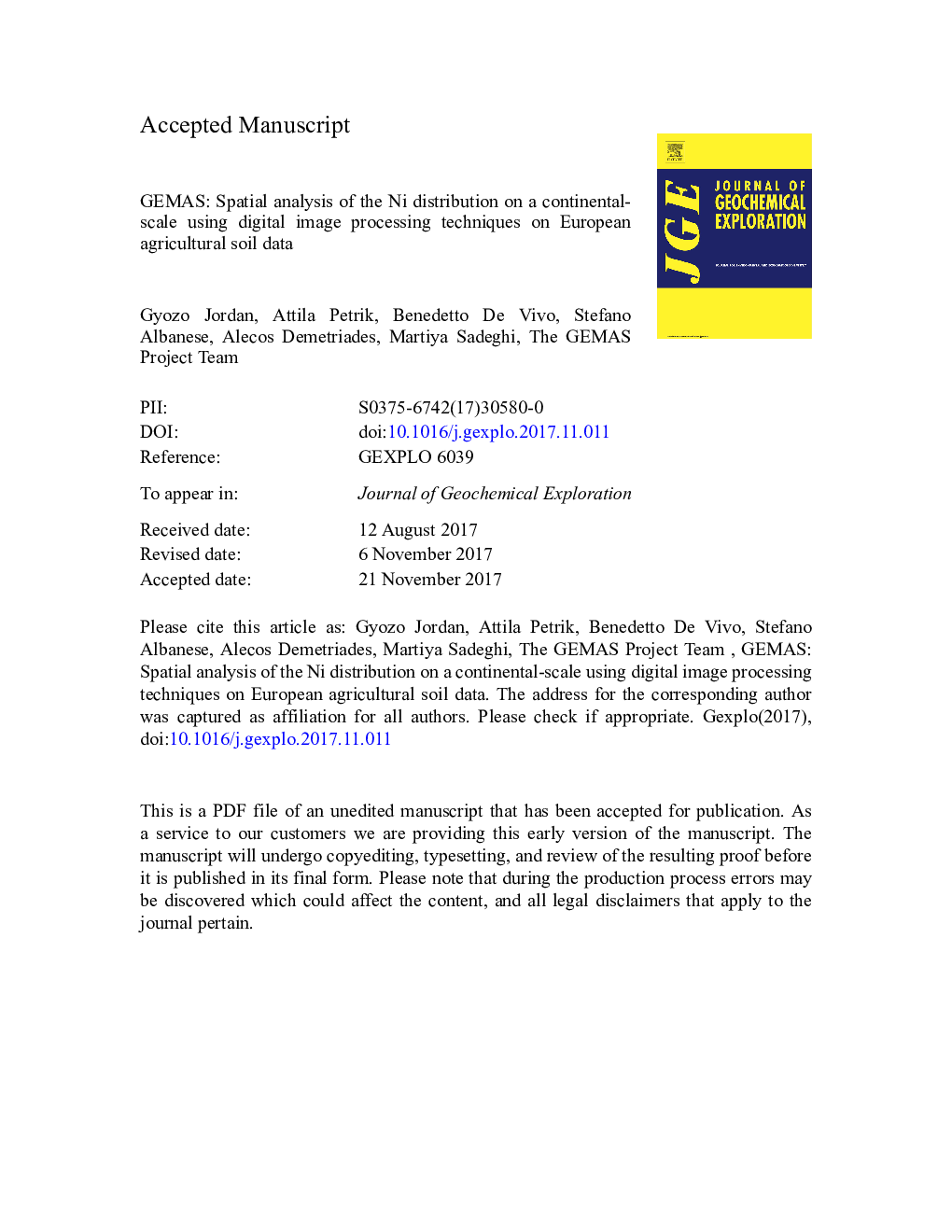| Article ID | Journal | Published Year | Pages | File Type |
|---|---|---|---|---|
| 8866083 | Journal of Geochemical Exploration | 2018 | 41 Pages |
Abstract
This study demonstrates the use of digital image processing for the spatial pattern recognition and characterisation of Ni concentrations in topsoil in Europe. Moving average smoothing was applied to the TIN-interpolated grid model to suppress small irregularities. Digital image processing was applied then to the grid. Several NE-SW, E-W and NW-SE oriented features were revealed at the continental scale. The dominant NE-SW linear features follow the Variscan and Alpine orogenies. The highest variability zones are in the Alps and the Balkans where mafic and ultramafic rocks outcrop. A single major E-W oriented north-facing feature runs along the last continental glaciation zone. This zone also coincides with a series of local maxima in Ni concentration along the glaciofluvial deposits. The NW-SE elongated features are located in the Pyrenees, northern Italy, Hellas and Fennoscandia. This study demonstrates the advantages of digital image processing analysis in identifying and characterising spatial geochemical patterns unseen before on conventional colour-surface maps.
Related Topics
Physical Sciences and Engineering
Earth and Planetary Sciences
Economic Geology
Authors
Gyozo Jordan, Attila Petrik, Benedetto De Vivo, Stefano Albanese, Alecos Demetriades, Martiya Sadeghi, The GEMAS Project Team The GEMAS Project Team,
